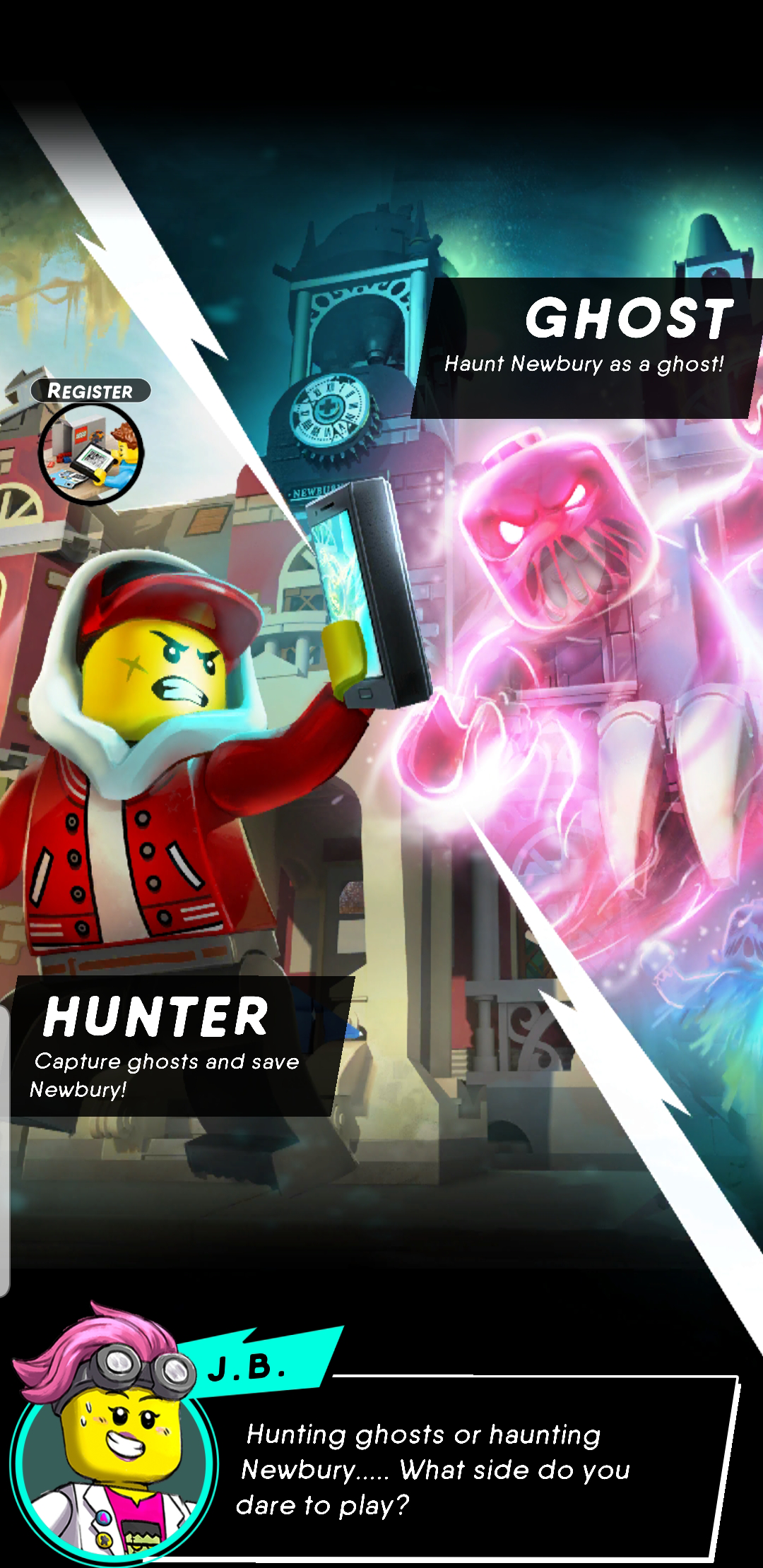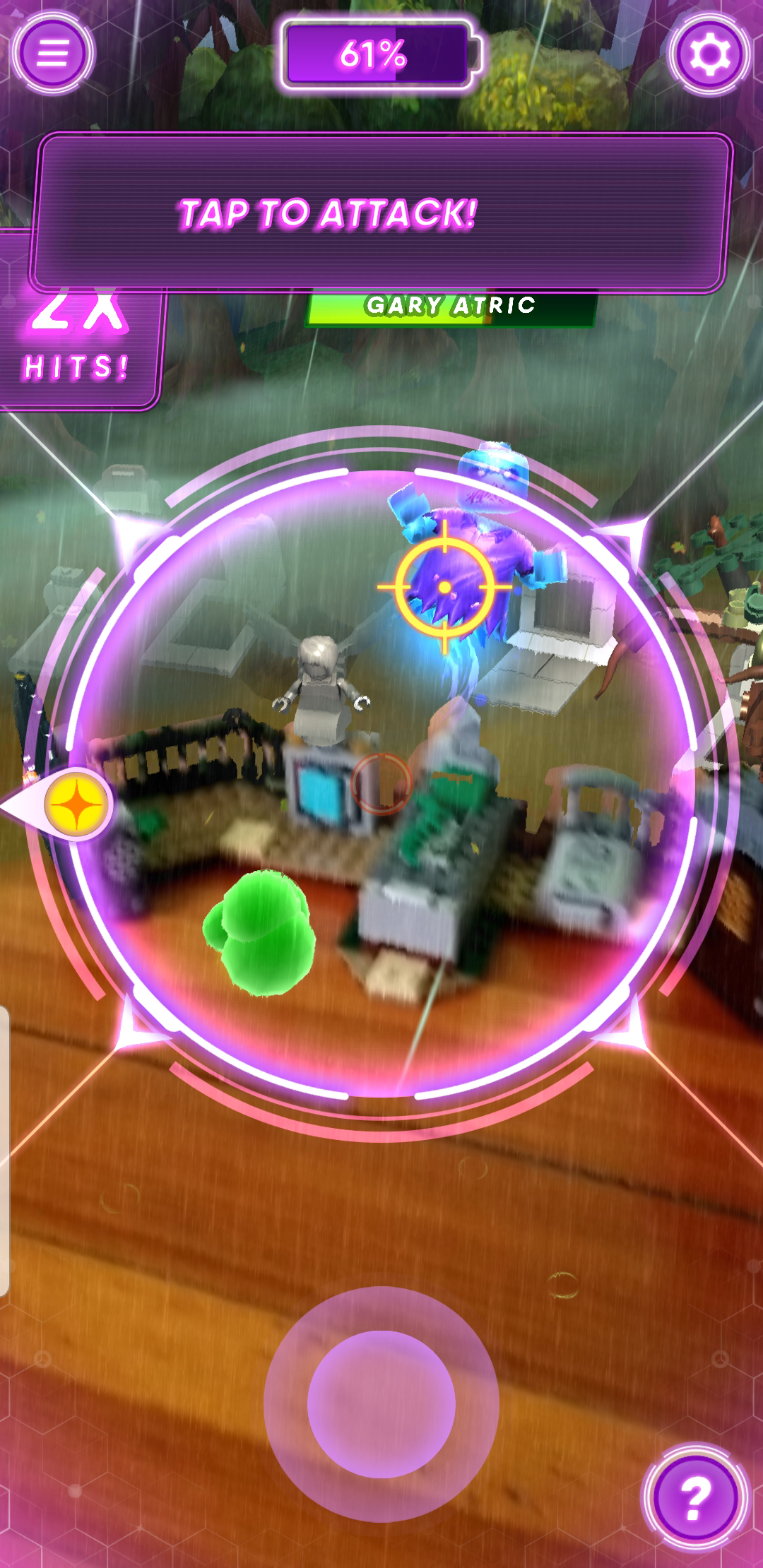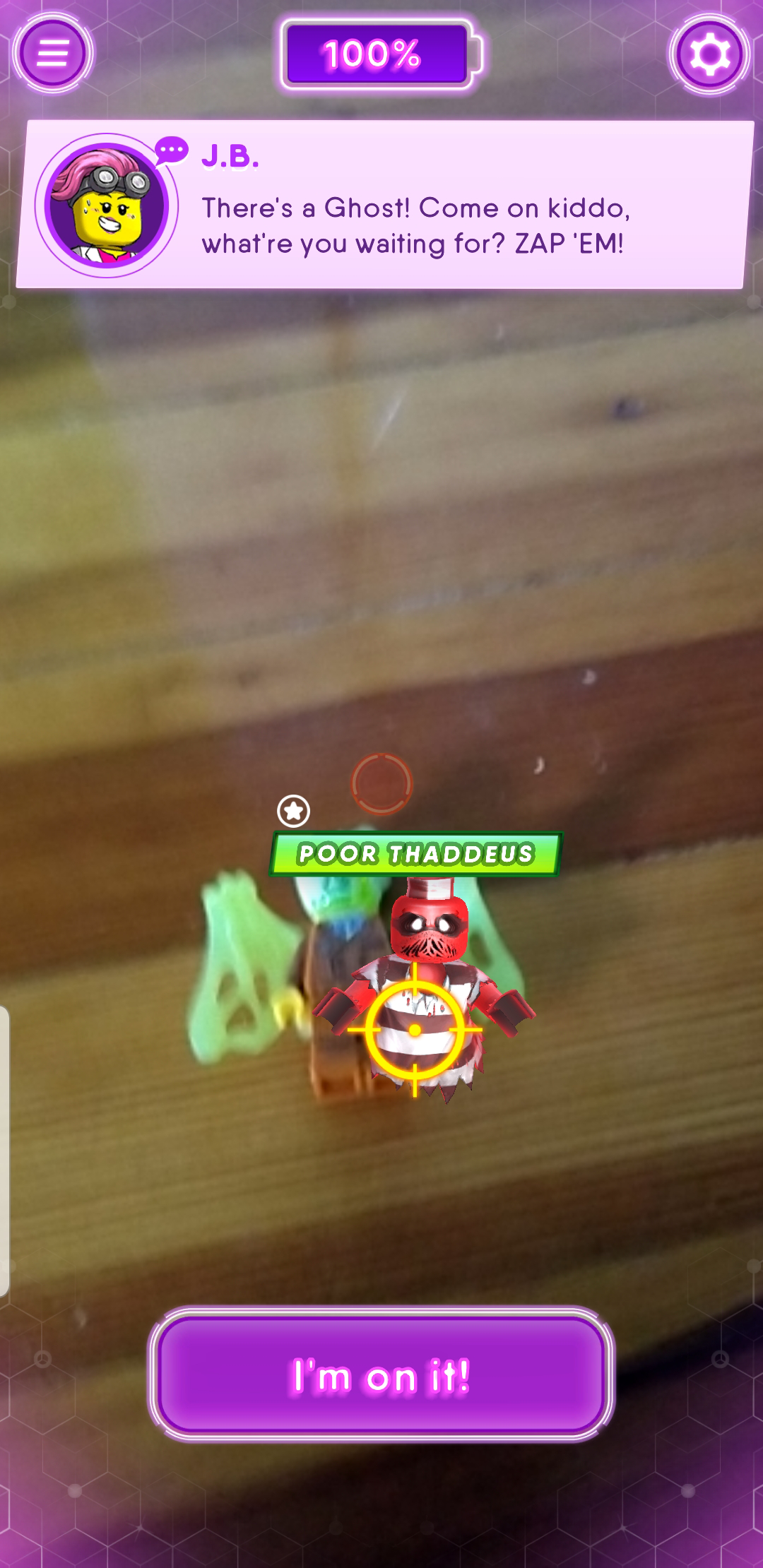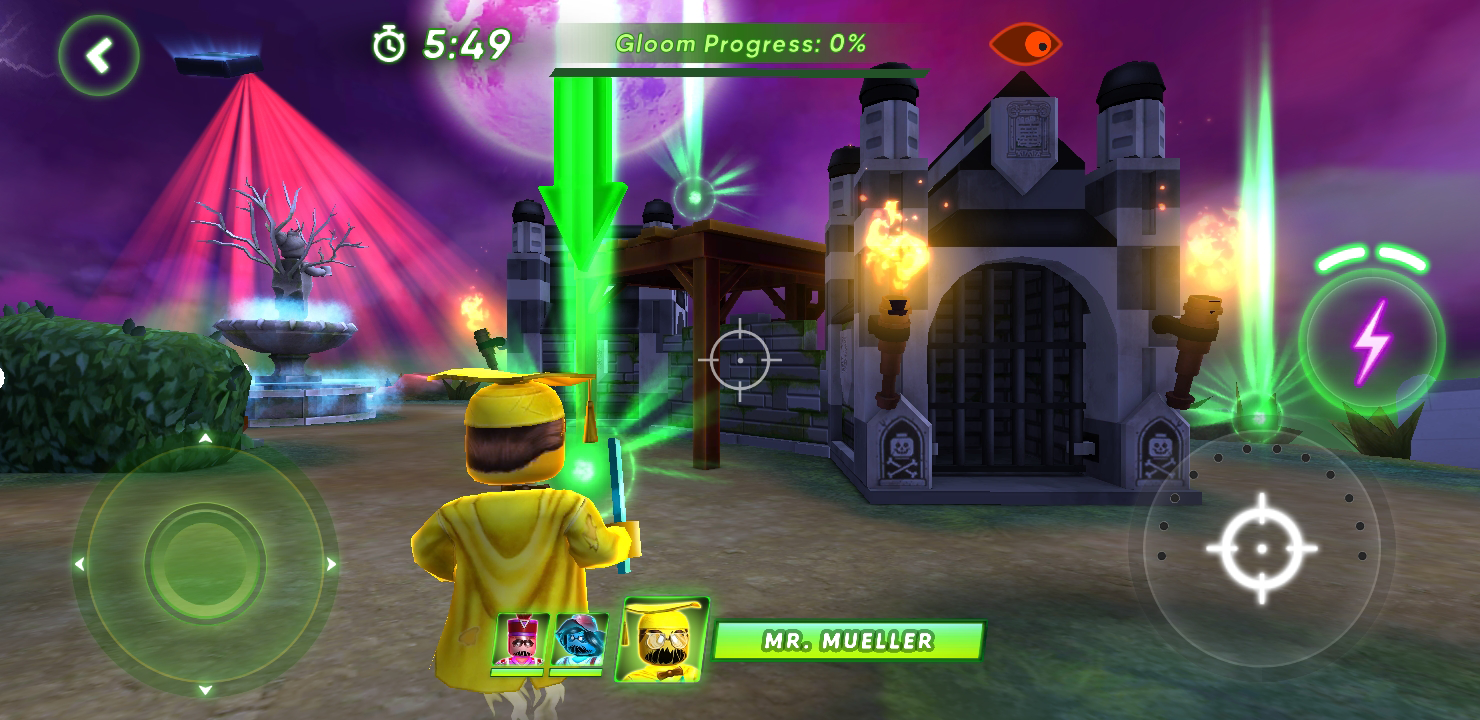Tom's Hardware Verdict
Lego’s Hidden Side sets pair an impressive augmented reality experience with an addictive gaming experience and fun builds.
Pros
- +
Magical AR experience
- +
Fun gameplay
- +
Beautiful aesthetics
- +
Detailed Lego builds
Cons
- -
Fragile structures fall apart too easily
- -
Story not fully developed
Why you can trust Tom's Hardware
Legos and technology go together like a pair of studded, 6 x 2 bricks. The world’s leading toy company has been heavily involved in robots and video games for decades, and last year it even dipped a toe into the augmented reality (AR) space with Lego Playgrounds, which projected digital characters on top of an existing Ninjago set.
Unfortunately, Playgrounds was a little disappointing. The app used Apple’s proprietary ARKit technology, so it could only run on iOS devices, and in my testing it didn’t work properly on many surfaces, including a dark hardwood table and light-brown hardwood floor. When the Playgrounds experience was active, it just wasn’t a very good game. The ninjas had limited fighting skill, and if you died in the game, you had to start over from the beginning. Also, after about five minutes, the novelty of viewing digital ninjas against the backdrop of my home office wore off.
Enter Lego Hidden Side, a completely new series of Lego sets built from the ground up for AR gaming on both Android and iOS. With a completely immersive environment that makes parts of the set come to life, addictive gameplay and a compelling story, Hidden Side creates a fascinating world you and your kids will want to visit again and again. Just make sure nobody knocks over or takes apart your builds.
The Story: Scooby-Doo Meets Ghostbusters
Like Ninjago and Nexo Knights, Hidden Side is a completely original Lego IP with its own unique story. The plot centers around teenage protagonists Jack and Parker, who use a ghost-detecting app on their smartphones and discover that their hometown of Newbury is filled with ghosts, which they capture (also using their phones). They are aided in their quest by scientist J.B., who appears in the game a couple of times to share basic info.
Everything in Newbury, from the characters to the sets and backgrounds, has a beautiful 1970s dark teen mystery feel reminiscent of the famous Rudy Nappi Hardy Boys covers or the first season of Scooby-Doo. The creepy but cool music reminded me a lot of the dramatic soundtrack from the Netflix series Dark.
Unfortunately, there’s not a lot of backstory available right now, either in the app or in the instructions that come with each set. Lego posted a trailer for a short video story it’s releasing in the fall. In the trailer, Jack and Parker are shooting lasers at ghosts in an abandoned building when J.B. comes in a school bus to help them.
Augmented Reality Experience
Available for iOS or Android, the Lego Hidden Side mobile app provides the best and most immersive AR gaming experience I’ve seen. Lego’s developers have combined the Vuforia AR engine with Apple’s ARKit (on the iOS version) and Google’s ARCore (on the Android version).
Get Tom's Hardware's best news and in-depth reviews, straight to your inbox.
The results are amazing. Instead of simply putting a few digital characters on top of the real world, the app changes how you see both the Lego playset and the background behind it. Instead of seeing my messy living room behind the high school or a blank wall behind the graveyard, the app showed trees with an ominous dusk sky. In the case of the high school, there was a parking lot behind it, and I sometimes had to peer over the back to attack ghosts that had retreated there.
The backgrounds aren’t the only part of reality that Hidden Side augments. Parts of the sets themselves come to life. An ominous looking tree that appears on top of the mausoleum in the graveyard became an animated object when viewed through the app, as did a graveyard angel. The bell on top of the high school became animated, and two gargoyles appeared perched on the roof in the apps, even though they are not part of the set in real life.
The Hidden Side game provides several points where you need to interact with the real-world Lego set in order to make something happen in the virtual world. Every set has a conveniently located color wheel that has gray (default / no choice), red, blue and yellow squares on it. The game frequently prompts you to change the wheel to a different color and then scans it to see what color you’ve selected. At other points, you need to open a door to let a ghost out or turn the entire high school around so you can interact with the front or back of the model.
Perhaps the best thing about the AR technology in Lego Hidden Side is how accurately it scans the sets. With Lego Playgrounds, I had to try over and over again to get the app to detect the Ninjago castle it worked with, and the technology only worked on the brightest blonde wood surface in my home. When scanning a set with Hidden Side, the app shows an outline that’s the shape of the Lego set, you position your camera so the set fits roughly into the outline and it detects easily.
The Hidden Side app quickly and easily detected both sets I tested -- the graveyard and the high school -- in dim lighting and on a variety of surfaces. Playgrounds would stop play and require me to rescan the Lego set every time I moved my phone in a direction that pushed the castle off-screen, but Hidden Side didn’t do that, even when I put my phone facedown on the floor for a few seconds.
Of course, the app warns you to play in a well-lit area on a surface that doesn’t have a patterned or reflective surface, so it may not work when you put it on a checkered tablecloth as part of a candlelight dinner. Interestingly, for most parts of the app, you have to use your device in portrait orientation, but if you play in ghost mode (where you are the ghosts), you do that in landscape.
The App
The first time you open the app, J.B. tells you the town is haunted, and then you are presented with the choice of either playing as a hunter or as a ghost. If you choose to play as a hunter, which is the primary mode, you then get to choose a location (aka level) to visit from a map.
Each location that the characters visit to hunt for ghosts is one of the eight Lego sets, and you must own that set in order to play it. You don’t actually play as the characters or see them on screen, but you do what they would do: fight ghosts and collect “gloom,” a form of ghostly energy that gives you points. Every set has a color wheel with blue, red and yellow squares on it, and the game will advise you to turn and scan the wheel so you can see gloom and ghosts in the red, blue or yellow spectrum.
While you’re collecting gloom, a ghost will eventually pop out. The ghosts all have different looks and humorous names, like Gary Atric and Nagging Nathan, that sound like they come straight from the Garbage Pail Kids cards. To fight, you’re shown crosshairs and tap to shoot lasers at both the ghost and green smoke it shoots at you. As you shoot, the crosshairs get smaller until your laser “overheats” and you have to wait for it to cool down before shooting again. You also have a battery at the top of the screen that shows your “charge,” which is really your health meter. If the ghost hits you enough, your charge goes down to zero and you lose, but you get to keep all the gloom you collected.
In addition to the eight locations on the map that correspond to Lego Hidden Side sets, you can scan a mini figurine known as a “gloombie” ( each set comes with them) or possessed person. You can scan that figure and fight the ghost that comes out of them to set them free.
When you’re not playing in a level, you can redeem gloom for added power-ups, such as faster shooting or shorter recharge times for your laser. You also gain subscribers -- presumably the ghost hunters are posting videos to a fictional YouTube channel -- and rewards, such as gloom or loot boxes for gaining more power ups. Any ghost you’ve defeated is added to your ghost collection screen.
Playing as a Ghost
If you don’t choose to play as a hunter, you can play as a ghost, more accurately a team of ghosts from your collection. When you’re a ghost, you get to “haunt” a level. There are various levels to unlock, but all of the ones that have appeared for me so far take place at the graveyard.
After you choose your level, you get to assemble a team of three ghosts: one blue ghost, one red ghost and one yellow ghost, because each can see “gloom” in a different spectrum.
What’s interesting about ghost mode is that it doesn’t require the physical Lego set at all. You can play it on the train, because it’s not actually AR. You move your ghost around a 3D digital world that looks like the graveyard set and earn gloom by attacking objects that have a green outline around them, like a creepy tree or the door to a mausoleum. To attack these objects you need energy, which you get by picking up green orbs that are all over the ground.
You need to collect 100% of the available gloom in six minutes (there’s a countdown timer) or you lose. You can switch among your three ghosts by walking over glowing change spots, and the entire time someone with a laser -- presumably a hunter -- is shooting at you from above. If your ghost “dies,” you just respawn at the back of the graveyard, which will make you waste some time getting back to where you were. If you gather 100% of the gloom and win, you unlock a new level and gloom you can use to buy upgrades.
The Lego Sets
For Hidden Side’s initial launch, Lego has released eight different sets that represent different places in the town of Newbury. Prices range from $19.99 for J.B.’s Ghost Lab to $129.99 for the humongous and very detailed Newbury Haunted High School.
| Hidden Side Lego Sets | Pieces | MSRP | Buy |
| Newbury Haunted High School | 1474 | 129.99 | Lego Hidden Side Newbury Haunted High School |
| Ghost Train Express | 698 | 79.99 | Lego Hidden Side Ghost Train Express |
| Paranormal Intercept Bus 3000 | 689 | 59.99 | Lego Hidden Side Paranormal Intercept Bus 3000 |
| Shrimp Shack Attack | 579 | 49.99 | Lego Hidden Side Shrimp Shack Attack |
| El Fuego's Stunt Truck | 428 | 39.99 | Lego Hidden Side El Fuego’s Stunt Truck |
| Graveyard Mystery | 335 | 29.99 | Lego Hidden Side Graveyard Mystery |
| Wrecked Shrimp Boat | 310 | 29.99 | Lego Hidden Side Wrecked Shrimp Boat |
| J.B.'s Ghost Lab | 174 | 19.99 | Lego Hidden Side J.B.’s Ghost Lab |
For this review, I tested the $29.99 Graveyard Mystery set and aforementioned Haunted High School. The 335-piece graveyard took about an hour to build with my seven-year-old son doing the lionshare of the work. It has a few neat interactive elements, including a grave that pops open, a small mausoleum with a door that you can open and the color wheel with a creepy angel statue on top. It also comes with Jack, Parker, a skeleton and Mr. Branson, who has different heads you can use to show him as possessed or not possessed.
As an AR platform, the Graveyard Mystery set is an affordable way to play a level in Hidden Side and has plenty of gloom and ghost battles to go around. However, it’s a rather small set, so it’s not as cool of a toy for kids to play with sans app, like some of the larger sets.
The Newbury Haunted High School is one of the coolest looking Lego sets I’ve ever built. The 1,474-piece model creates a high school building filled with several different rooms, including a restroom, cafeteria, classroom, science lab and a trophy case. The back of the set shows all of these rooms and lets you play with them, while the front side shows the outside of the building. The building has some really neat interactive elements, including claws and creepy eyes that pop out to make the entire building look like a monster.
As you might imagine, the high school took a lot longer to build -- six to seven hours -- than the graveyard. And while my son was able to do a lot of the work without help, I had to help him a few times when he misaligned blocks.
Fragile Sets
The problem with both sets, which is more pronounced on the Haunted High School, is that they are quite fragile. Some of the pieces that join one major section to another are held together by only a couple of studs, so it’s very easy to knock pieces off or for parts to fall off. If major parts fall off, you won’t be able to scan the set until you fix it. And if you try moving either set after building it, you will definitely have to do some repairs.
As the smaller set, the graveyard is fairly easy to repair, and the app was also pretty forgiving; if a small piece was missing or loose but the general shape of the graveyard was static, it would scan without a problem. However, the high school posed a much bigger challenge. Several times, major pieces of the structure fell off, seemingly just from a light touch or even when my son was bouncing around the other side of the room. Putting things back together was a time-consuming process because the instructions tell you how to build it, but not how to fix it if, for example, one of the towers falls off.
To be fair, most Lego sets can break apart if you’re not very gentle with them. I can’t count the number of great-looking sets that have fallen apart after my son played with them a little bit. But in the case of Lego Hidden Side sets, you have to touch them to play the AR game and need to keep them in one piece if you want to play the game repeatedly. Parents may want to think about putting these sets in a secure location on their own tables or shelves if possible. And it may be worth considering using the dreaded Kragle.
Bottom Line
Lego’s Hidden Side sets provide a compelling combination of AR awesomeness and Lego building fun. The app’s AR magic is truly impressive, credibly blurring the line between the physical world and the virtual world. Some users may not even notice the difference between parts of a set that render as computer graphics and others that come from your device’s camera.
The story seems to have a ton of potential, so let’s hope the company follows through with a TV show or at least a series of web videos that fleshes the characters and plot out. The creepy 1970s aesthetic and dramatic music give this a rich atmosphere that will draw in both adults and kids. Any or all of the eight sets makes a great gift or wonderful project for children as young as seven to share with their parents. Just be sure to snap everything together tightly and keep the fragile structures from falling apart.
MORE: Lego AR Playgrounds Hand-On: Great AR, Mediocre Gameplay
MORE: Lego Unites AR, Physical Play and Ghost Hunting With New Hidden Side Line
Avram Piltch is Managing Editor: Special Projects. When he's not playing with the latest gadgets at work or putting on VR helmets at trade shows, you'll find him rooting his phone, taking apart his PC, or coding plugins. With his technical knowledge and passion for testing, Avram developed many real-world benchmarks, including our laptop battery test.












